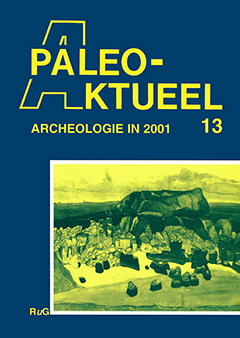ETEN IN DE WOESTIJN: VOEDSEL VOOR MENS EN DIER OP DOORTOCHT IN DE WESTELIJKE WOESTIJN VAN EGYPTE
Samenvatting
The 'Theban Desert Road Survey' project, directed by John and Deborah Darnell (Yale university), is focused on the study of the desert routes west of the Qena bend. The project identified many unknown desert tracks and found a large number of rock inscriptions, including a graffito that represents the eldest alphabet. Recently, the scientific scope of the project has been broadened to include an archaeobotanical study of the debris. Samples of stratified deposits were exeavaled at three caravansaries: Gebel Qarn el-Gir, Wadi el-Hôl and Gebel Roma', in which the New Kingdom was best represented. The botanical remains represent a mixture of cereals, pulses, oil and fibre crops, fruits trees, vegetables, tubers and condiments. Hulled six-row barley and emmer predominated. The presence of emmer in dung indicates that it was also used as animal fodder. Additionally, in situ buriais with Tasian grave goods found at Wadi el-Hôl were tentatively examined. They contained an atmost pure sample of Panicum turgidum and emmer. Threshing waste proved to be a mixture o f emmer, barley and sorghum and most probably is of much younger date.

